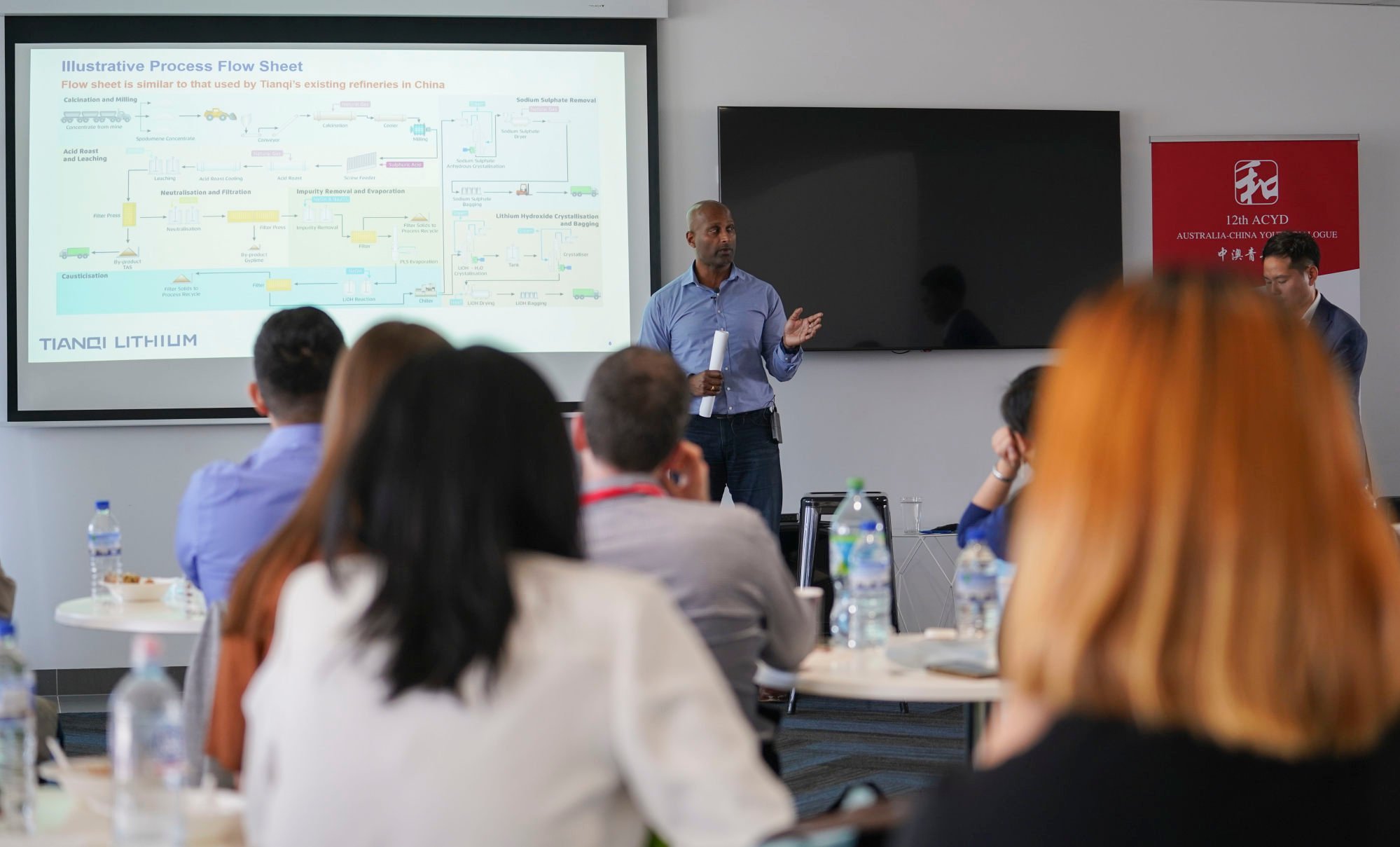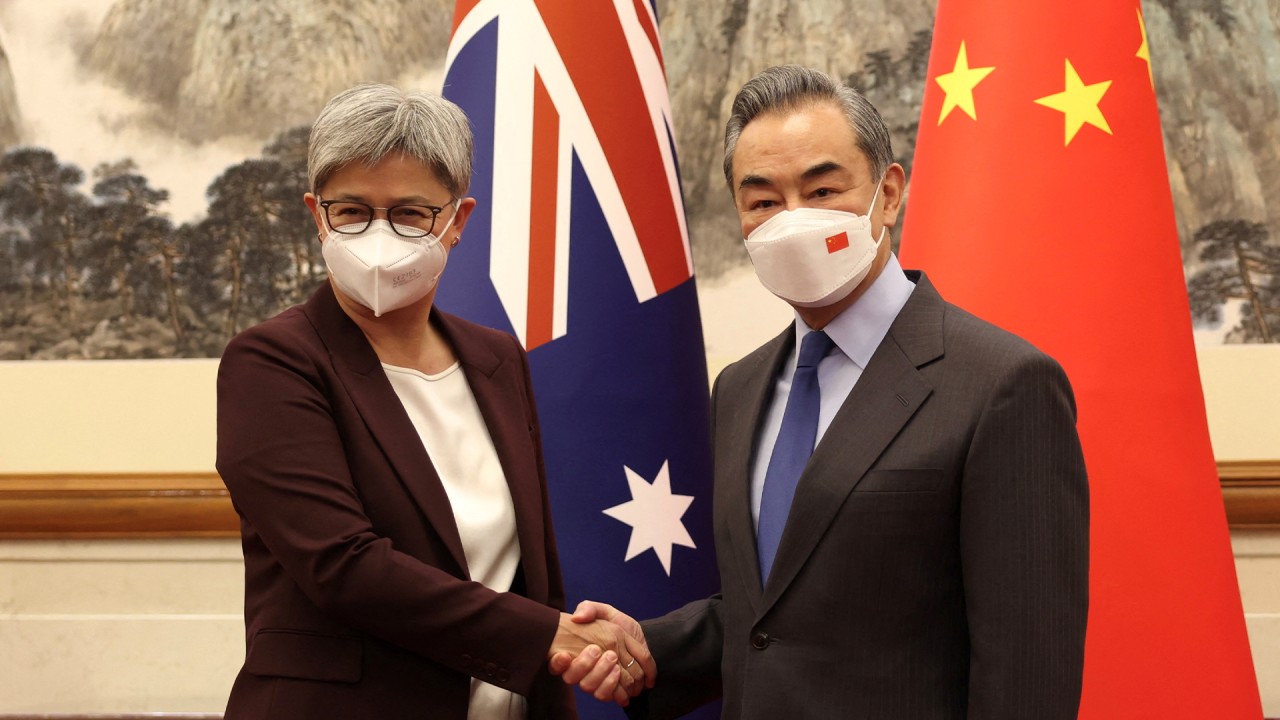
China-Australia lithium tie-up highlights symbiotic bond, ‘mutual respect’ amid green energy drive
- Chengdu-based Tianqi Lithium and Australian company IGO established a US$1.4 billion joint venture in December 2020
- Tianqi Lithium said in May that it had produced Australia’s first battery-grade lithium hydroxide, which is a key material for making lithium batteries for electric vehicles
Located 45 minutes from the centre of Perth in Western Australia, the 120 sq km (46 square mile) Kwinana Industrial Area is home to a China-Australia joint venture that reflects the interdependent nature of both countries.
The joint venture was established in December 2020 with US$1.4 billion in capital via an agreement between the Chengdu-based Tianqi Lithium and Australian company IGO, with the Kwinana plant playing a pivotal role in manufacturing lithium hydroxide monohydrate from spodumene.
The spodumene is sourced from a mine in Greenbushes, which is located 250km to the south of Kwinana, with the finished products shipped from Western Australia’s Port of Fremantle.
According to Statistica, Australia produces 55 per cent of the world’s lithium, while China bought over 90 per cent of the country’s lithium this year based on figures from the Australian Bureau of Statistics.
Tianqi Lithium CEO Raj Surendran expects global lithium demand will triple to 1.5 million tonnes by 2027 amid the growing demand for electric vehicles.
“[We are] getting trains two and three up and running in 2025 and 2027 on top of the train one that is gradually being ramped up,” Surendran told the Post during a plant visit as part of the 12th Australia China Youth Dialogue.

The development of the lithium processing and associated downstream industries in Western Australia will support thousands of local jobs, added Surendran, with 200 employees currently employed at the Kwinana plant.
“For example, clean energy technologies need a range of minerals, including critical minerals like cobalt, lithium, and rare earth elements,” he said.
Producing and exporting the key minerals could create up to 52,000 Australian jobs in regions like Western Australia, the Pilbara and South Australia by 2050, said Surendran, citing government estimates.
Perth-based manganese producer Accelerate Resources is also trying to capture the opportunity brought by the rising popularity of electric vehicles to diversify its revenue streams.
Australia must ‘entrench’ role as China’s key supplier after trade bans ‘fail’
Aiming to produce high purity manganese for the electric vehicle battery industry, Accelerate Resources is seeking government support for its newly-developed value adding business.
“New EV battery technologies that use manganese to replace a proportion of cobalt can act as battery stabilisers,” said Zhan Yaxi, founder and managing director at Accelerate Resources.
“Manganese batteries are already being used in battery production to reduce overall EV battery costs for the mass market.”
Zhan sees China as eventually being a vital customer because it produces more than 70 per cent of the world’s electric vehicle batteries.

According to a global mine report in 2022 by PwC released in June, lithium ranked second largest in terms of critical minerals by deal value at US$4.1 billion in 2021 after copper because companies “take advantage of expected rising EV demand for lithium”.
But there are hidden worries amid the boom, with Surendran calling for more support from policymakers to help the industry grow.
A sufficient long-term access to low-cost energy is also key, he added, but “it requires government participation and stewardship of solutions”.
We might miss the boat on the move to green energy if we don’t move quicker
“My concern is that all of these will mean supply will struggle to meet actual demand,” Surendran said.
“And we might miss the boat on the move to green energy if we don’t move quicker.”
Zhan is looking for business partners in other parts of the world to “de-risk” Accelerate Resources’ plans because the world is undergoing “geopolitical fragmentation”.
Traditionally, most Australia’s manganese ore has been shipped to China for downstream processing because it has taken the lead in manganese ore infrastructure and technical expertise, according to Zhan, while proximity is also an advantage.
Once China stops working, businesses around the world face challenges
“The pandemic highlighted the supply chain risks, and how much reliance the world had on China,” Zhan added.
“Once China stops working, businesses around the world face challenges.”
According to the strategy update up to November from the Western Australia government’s Department of Jobs, Tourism, Science and Innovation, its top priority is “growing participation in global supply chains”.
In the report, the Western Australian Government stated that it is working with the industry to increase integration into the existing and emerging global supply chains that are related to renewable energy, defence, aerospace and advanced manufacturing.
After 2.5 years of tension, China and Australia’s relationship seeks new energy
“China and Australia have neither historical grievances nor fundamental conflicts of interest. They should and can become mutually needed partners,” said Wang according to a Chinese foreign ministry statement.
The meeting between Albanese and Xi on the sidelines of G20 in November is regarded as “positive”, according to Zhan, especially “after a few years of volatility”.
“From the business perspective, dialogues at a high level is an encouraging sign,” she said, adding that a lengthy Australian government approval process on the participation of Chinese investment can discourage investors.
“Maybe something more mature can come out of it, such as opening up more cooperation opportunities and working closely with China will be mutually beneficial for Australia and China.”
Surendran believes the China-Australia business relationship, which generally operates without geopolitical tensions, is different to China-Australia political relationship.
The lithium hydroxide processing technology in China and the mining methods in Australia is what makes China “significant” for the business, he added.
“There has been mature technology existing in China that Australia doesn’t have, and Australia is one of the leading countries in the world that has proficient and effective mining experiences, which China can benefit from,” said Surendran.
Running a company with staff from different countries, Surendran highlighted that “mutual respect” is what makes the business thrive when both Chinese and Australian cultures exist in the same workspace.
“It’s a cross collaboration between two different cultures on a new business,” said Surendran. “There’s a more creative approach to problem solving.
“Chinese businesses are like other businesses. They want success. They want to go home safely every day. They want to make profits for their shareholders.”






